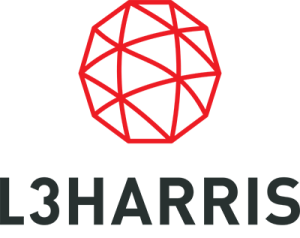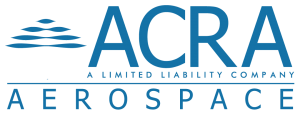The 5 Stages of the Executive Search Process Explained

The diversity in executive search methodologies underscores the importance of comprehending each firm’s approach—crucial for choosing your ideal recruitment partner. This insight becomes even more critical in industries demanding specialized knowledge like aerospace and defense. We’ll explore the nuanced stages of the executive search process and its critical role in attracting top-tier professionals.
Stage 1: Understanding the Company and Position
The initial consultation and assessment are fundamental to tailoring the executive search to your organization’s unique needs. This process involves engaging with key stakeholders to understand your organization’s culture, strategic goals, and leadership requirements. This phase allows for a precise definition of the leadership role, ensuring the search is directed toward candidates who can truly drive organizational success.
For instance, in aerospace executive search, this meticulous approach helps pinpoint leaders capable of navigating the complex regulatory and innovation landscapes typical of this industry. This ensures that candidates are evaluated not just for their skills but for their potential to influence industry-specific challenges and opportunities.
Performance-Based Position Profiling
Creating a performance-based position profile is crucial to finding the right candidate that fulfills the technical requirements of the role and embodies the values and vision of the organization.
- Company Summary: In depth overview of the business, breaking down key details pertinent to the position. This can include program, customers, processes, and site information relevant to the candidate.
- Performance Objectives: Specifies the results and benchmarks the new hire will be expected to achieve, aligning them with broader organizational goals.
- Skill Requirements: Details the technical skills and expertise necessary for the role, ensuring candidates possess the right professional qualifications.
- Experience Criteria: Outlines the level and types of experience ideal for the role, which may include industry-specific knowledge or previous leadership achievements.
- Personal Attributes: Identifies key personality traits and behavioral characteristics that align with the company’s culture and leadership style.
The position profile acts as a strategic blueprint for the search process, guiding the evaluation of candidates to ensure a comprehensive match beyond mere qualifications. By aligning the profile with the organization’s immediate needs and long-term objectives, the search firm can significantly narrow down the field to candidates who are capable and a cultural fit, setting the stage for sustained success and integration. The position profile asks as a proposition to the candidate, articulating the role in a manner beyond duties and responsibilities.
Additionally, the profile serves as an agreement between the company and the executive search firm, ensuring there is complete alignment in the ideal profile and clear representation of the business.
Stage 2: Strategic Research and Sourcing
The next stage in the executive search process is expert research to pinpoint the most qualified candidates. Research conducted is intricate and aimed at understanding not only the vast talent pools available but also the specific demands of the role and how these requirements align with current industry trends. This phase is pivotal as it sets the strategic direction of the recruitment efforts.
Developing a Targeted Search Strategy
A targeted search strategy at this phase involves detailed analysis and identifying industries and companies where potential candidates are likely to be developed. By assessing market trends and organizational growth paths, the search is tailored to encompass environments likely to foster the desired skills and leadership qualities. Such a focused approach not only makes the search process more efficient but also enhances the chances of success by zeroing in on candidates with a verifiable track record in similar roles.
Custom Sourcing Techniques
Custom sourcing techniques in executive search are crucial for tapping into a pool of candidates beyond the active job seekers. These techniques include a combination of direct outreach, strategic networking within specialized industry channels, and the utilization of advanced digital tools to connect with passive candidates discreetly. This multifaceted approach expands the reach of the search, contacting a wider and more diverse talent pool, thereby enriching the selection process and enhancing the likelihood of finding the perfect match for niche roles.
Stage 3: Candidate Recruitment and Evaluation
This stage shifts from theoretical matches of skills and roles to actual interactions with candidates. The process involves initiating a meaningful connection that goes beyond mere qualifications, aiming to gauge the depth of each candidate’s interest and their alignment with the role’s requirements.
Initial Candidate Engagement
The engagement process starts with conversations that reach deeper than the resume to grasp the candidates’ current professional situations and future aspirations. This initial interaction is vital for assessing their enthusiasm for new challenges and readiness for potential roles. It lays the groundwork for more thorough evaluations, setting the stage for assessing their fit with the broader goals of the hiring organization.
In-depth Candidate Assessment
A comprehensive assessment framework is utilized to thoroughly understand each candidate:
- Problem Solving and Adaptability Interviews: These are structured to evaluate how candidates handle complex scenarios and adapt to changing business environments.
- Technical Skill Verification: Assessments are conducted to confirm that candidates have the necessary technical abilities for the role, ensuring they can handle the specific demands of the position.
- Cultural Compatibility Evaluation: The alignment of candidates’ values and work styles with the prospective employer’s culture is critically assessed, an essential factor for ensuring long-term integration and success within the organization.
- Candidate Summaries: A detailed summary of the candidate’s work histories where details regarding departures and role changes, as well as targeted insight relevant to the requirements are captured.
This assessment phase is pivotal in confirming that candidates are not only capable of fulfilling the role but are genuinely suited to thrive within the organization’s culture and contribute to its strategic objectives. This rigorous evaluation ensures that only those who align with the role’s requirements and the organizational ethos are moved forward in the process.
Stage 4: Client Interviews and Candidate Selection
This pivotal stage in the executive search process focuses on direct interactions between clients and candidates, aiming to match leadership skills with organizational needs. Effective interviews and candidate evaluations are critical for ensuring that prospective leaders align well with the strategic objectives and culture of the hiring organization.
Enhancing Interview Dynamics
Effective interviews require meticulous preparation and a strategic approach to ensure that both parties can engage meaningfully. The process involves managing logistical details, setting clear agendas, and preparing both candidates and clients with the necessary information to facilitate insightful discussions. This approach helps uncover a candidate’s true potential and fit for the organization.
Comprehensive Candidate Analysis
Following the interviews, a detailed analysis of each candidate is crucial to aid decision-making:
- Candidate Comparisons: Systematic comparison of top candidates, focusing on their relative strengths, weaknesses, and potential organizational impact.
- Cultural Alignment Evaluation: Detailed assessment of how each candidate’s values and behavioral style match the organization’s culture.
- Strategic Contribution Forecast: Analysis of the potential strategic contributions candidates might offer to the organization’s long-term goals.
These steps ensure that the selection process is thorough and targeted, equipping decision-makers with the necessary insights to choose a leader who will drive success and mesh seamlessly with the company’s ethos and future directions.
Stage 5: Offer, Placement, and Onboarding
The conclusion of the executive search process, encompassing offer negotiation and onboarding, is pivotal. It not only finalizes the recruitment but also starts the integration of the new leader into the organizational fabric, setting a precedent for their impact and longevity within the company.
Negotiating and Extending the Offer
Finalizing the employment offer is a nuanced process that demands meticulous attention to detail to ensure that all terms meet the expectations of both the executive and the organization.
- Comprehensive Compensation Strategy: Discussions extend beyond the basic salary to include bonuses, stock options, and other performance-related incentives. These conversations ensure the offer is enticing and competitive, reflecting the executive’s value and potential contribution. Details regarding equity and breakdown of true values, as well as the candidate’s expectations can mitigate an extended negotiation process.
- Relocation and Lifestyle Adjustments: For candidates relocating, the negotiation includes elements such as relocation allowances, signing bonuses, or even housing benefits, ensuring the transition is as seamless as possible. This consideration helps reduce any personal disruption caused by the move, facilitating a smoother transition to the new role.
- Contractual Clarity: Every aspect of the contract is clarified—from role responsibilities and success metrics to potential severance terms. This clarity helps prevent misunderstandings and sets clear expectations for performance and accountability.
The negotiation process ensures that the offer meets as well as enriches the executive’s career trajectory and aligns seamlessly with the organizational objectives. By addressing compensation comprehensively, facilitating relocation needs, and clarifying contractual terms, we lay a robust foundation for mutual satisfaction and long-term success, paving the way for a fruitful partnership between the executive and the organization.
Facilitating a Smooth Transition
A well-structured onboarding process is essential for the new leader’s successful assimilation into the company’s culture and operations.
Proactive Pre-Boarding Engagements
Before the official start date, the executive is introduced to key team members through informal meetings or digital introductions. This strategy helps in building foundational relationships and understanding team dynamics early on.
Tailored Onboarding Program
A personalized onboarding plan is crucial. It includes scheduled training, strategic planning sessions, and one-on-one meetings with critical stakeholders. This plan is designed to align the executive with the company’s operational procedures and strategic goals swiftly and efficiently.
Continuous Integration Support
Post-placement support is crucial for the newly placed executive. Regular check-ins, performance feedback sessions, and alignment meetings help address any teething problems and adjust strategies as needed to ensure the executive’s role effectiveness and comfort within the company.
From the strategic sourcing of candidates to the detailed onboarding of chosen leaders, each phase of the executive search process is crucial to ensuring the long-term success of both the executive and the organization. By partnering with a firm that excels in navigating these stages, you gain access to a pool of candidates who are not only qualified but are poised to thrive and lead. To engage with a partner who leads the industry in executive search, connect with us today!

























